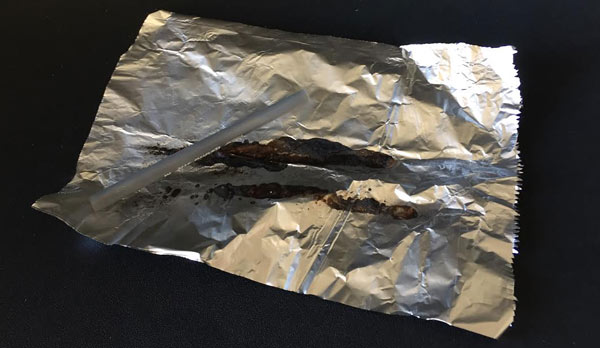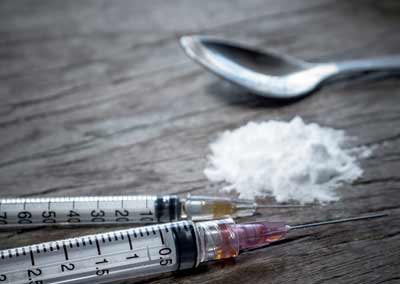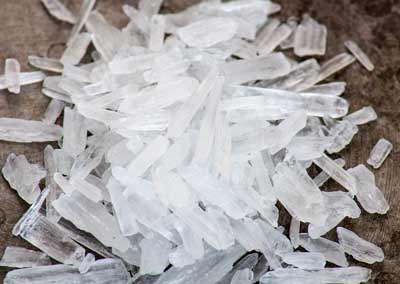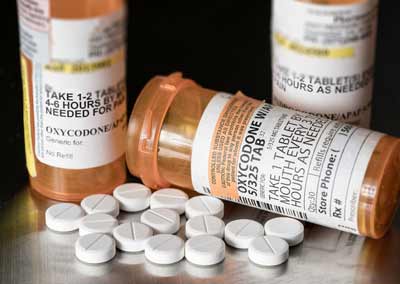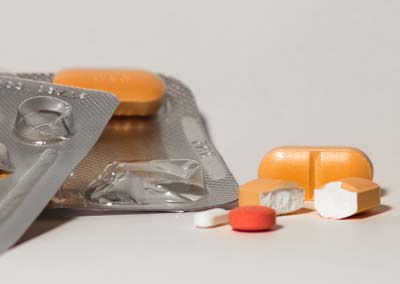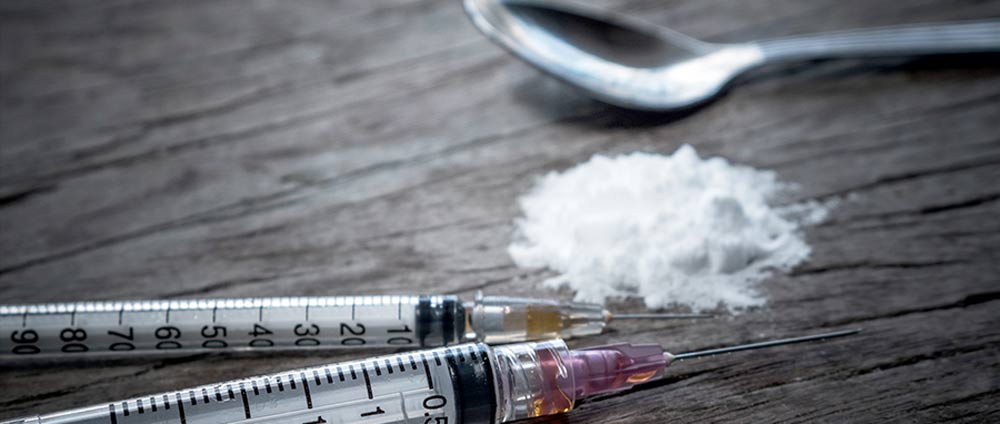
Heroin Abuse:
Heroin is one of the most widely abused narcotics in the United States. Roughly 1 million people reported using it last year. If you think someone is abusing heroin, there are ways to recognize their addiction and get effective treatment for it.
What is Heroin?
Heroin is an opioid or pain killer made from the opium poppy plant. It was first made in Germany and was marketed as a non-addictive alternative to morphine. Heroin works by depressing the brain and body’s ability to perceive physical pain. In the absence of any physical pain, heroin creates an addictive euphoric warm feeling.
The Difference Between Opiates and Opioids:
In most cases, the terms opioid and opiate are interchangeable since they are both painkillers. The difference between them is that opioids are made synthetically from opiates. In contrast, opioids are made by distilling the nectar and flowers of the opium poppy. Therefore all opioids like heroin are also opiates; however, opiates like morphine are not also opioids. Examples of opiates are morphine, opium, and codeine. Examples of opioids include heroin, fentanyl, Vicodin, and oxycontin.
Opiate is also a medical term used to describe a drug’s pain-killing effect (“It has an opiate effect”). And opioid is used to describe the widespread abuse of painkillers today (“the opioid crisis”).
Opium vs. Opiates. What’s the Difference?:
An opiate is a kind of drug that creates a pain-killing effect. Opium is a specific opiate pain killer. So while all opium is an opiate, not all opiates are opium.
What is a Speedball?
A speedball is a street name describing a mixture of heroin with a stimulant like meth, cocaine, or crack. The most common kind of speedball involves combining heroin and cocaine.
In theory, speedballs “cancel” out the negative effects of both drugs. Heroin dampens the jitters and anxiety of cocaine, while cocaine helps stop heroin’s “nodding off” effect. In reality, speedballs only cancel out your perception of these effects. They are far more likely to cause an overdose than either drug used individually.
- People may re-up more often or use higher doses and trigger an overdose.
- Heroin suppresses your breathing rate, while cocaine decreases the amount of oxygen your body gets from breathing. The result can be death by oxygen starvation.
- Cocaine wears off far more quickly than heroin. Someone may overdose on heroin and not realize it until the cocaine wears off.
Speedballs are responsible for many overdose deaths, including celebrities like Chris Farley, John Belushi, River Phoenix, and Phillip Seymour Hoffman.
Quiz: See if Someone is Abusing Heroin
Understanding Heroin Addiction:
Why Do People Use Heroin?
People use heroin because they are in pain of some kind and are looking to escape that pain. Heroin removes your ability to perceive pain, with immediate effects like:
- A rush of pleasure or euphoria
- Feelings of warmth and safety
- Sense of overall well-being
- Absence of physical pain.
What Does Heroin Feel Like?:
Heroin is a pain killer in every sense of the word. It chemically removes the ability to perceive pain. In the absence of physical pain, heroin also dulls emotional pain since the brain regions for processing physical and emotional pain are located next to one another and are connected. As a result of its immediate effects, it’s no surprise that many people who abuse heroin also have a history of trauma, homelessness, or an underlying mental health issue. For so many people recovering from heroin addiction, heroin began as a way to self-medicate something.
Ways People Use Heroin:
- Snorting Heroin: The least common method. Usually requires liquifying the drug before inhaling through the nose. Effects start and wear off quicker.
- Smoking Heroin: The most common method. It involves igniting the powder and inhaling the fumes. Effects start later and last longer.
- Injecting (shooting) Heroin: The second most common method (most common for heavy users). Requires liquifying the heroin before injecting it into the blood. Effects start and wear off quickest but are more potent, and therefore more dangerous.
The way someone uses heroin can reveal how severe their addiction is. Most people begin by smoking heroin. Usually, they smoke black tar heroin because it is the cheapest and easiest to find. Someone’s habit is likely more severe if they snort heroin since it requires distilling it into liquid form. If someone is injecting heroin, it indicates they’ve been using it long enough to build a tolerance because injecting heroin can be fatal without a tolerance. People with tolerances are also more likely to begin combining heroin with other substances to increase the high.
Recognizing Heroin:
What Does heroin smell like:
Heroin often does not smell like anything and is odorless. However, heroin may smell like vinegar if it’s heavily processed and impure. As a result, black tar heroin is the most likely to have a vinegar smell to it.
What Does Heroin Taste Like?
Since there is no safe way to sample heroin, descriptions of its taste come from people who use it. According to people in recovery, raw and uncut white heroin tastes very bitter. However, street dealers cut their heroin with other products and sell the mixture at full price to make money. As a result, heroin often tastes like whatever additives dealers used to cut it.
Common things used to cut heroin:
- Talcum powder
- Sugar (white or brown)
- Chalk
- Flour
- Starch
- Caffeine
- Baking Soda
- Laundry detergent
- Rat Poison
- Crushed over the counter painkillers
- Other drugs like fentanyl, cocaine, codeine, or morphine.
If you believe you’ve found heroin, you should not taste it since that will activate its effects. If you’d like to confirm that you’ve found heroin, the quickest way is to purchase an over-the-counter drug test from your local pharmacy.
What Does Heroin Look Like?
Raw heroin looks like a fine white powder similar to baby powder. Black tar heroin looks like ash or soot, and brown heroin looks like a sandy powder. Heroin is most often white, black, or brown. But it can come in various colors (pink, green, or purple) depending on the chemicals used to “cut” it during processing.
Cutting is a practice used by drug traffickers to make money by using other things to dilute drugs. For instance, if a gram of heroin is worth $100, they might mix half a gram of baby powder with half a gram of heroin and sell it for $100. Although people often think white heroin is the purest, it’s important to understand that on the street this is a misconception. Generally, crudely processed heroin is black, and diluted black tar heroin is brown. But just because heroin is white doesn’t mean it wasn’t cut with another white substance like sugar.
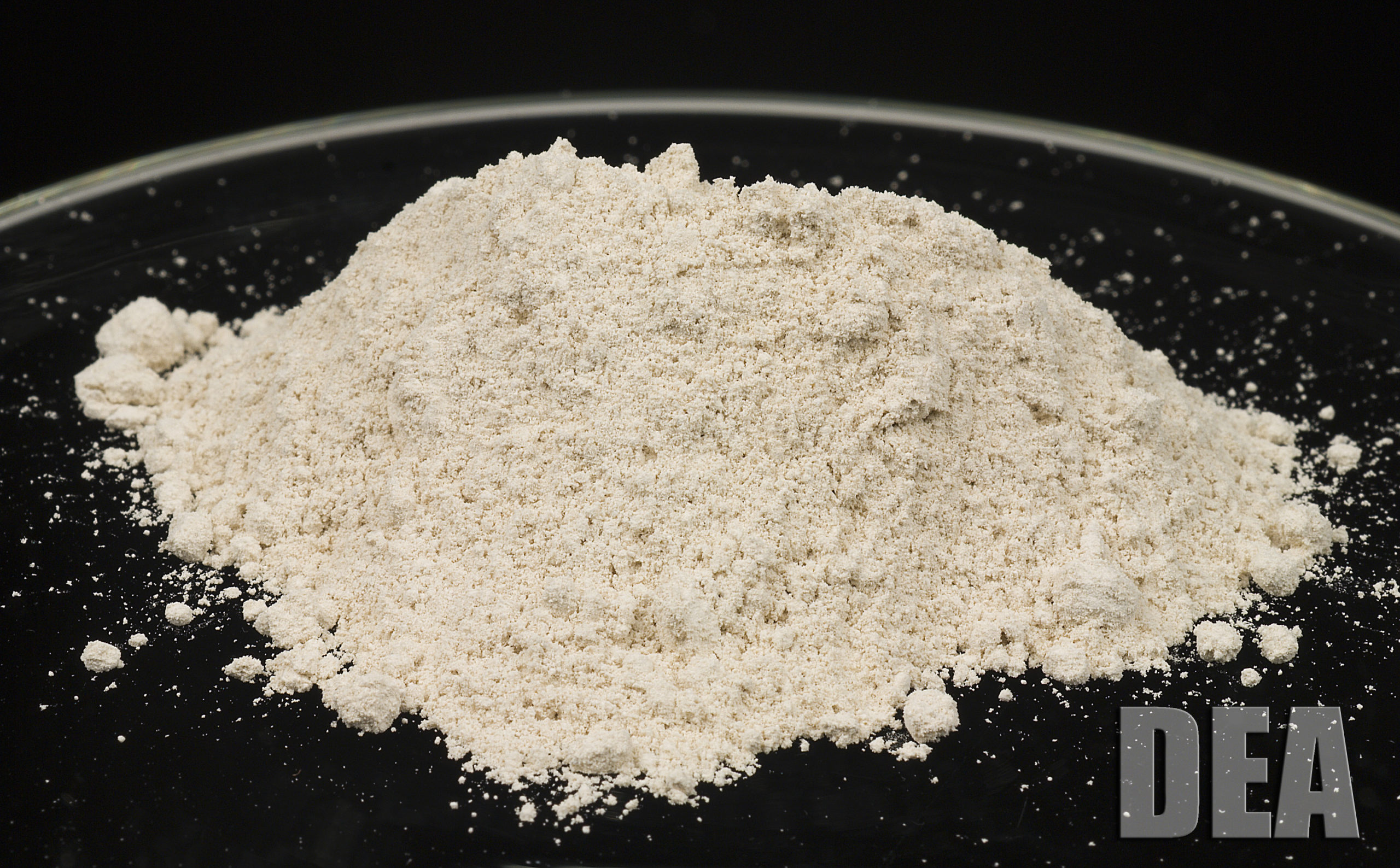
White Heroin:
White powder heroin is the purest and most potent form of the drug. Because of this, it is also the rarest and most expensive. Typically white powder heroin is cut with other chemicals that will make it appear less white. People buying white heroin often inject it to take advantage of its potency. However, they may also smoke it (a process known as “chasing the dragon”)
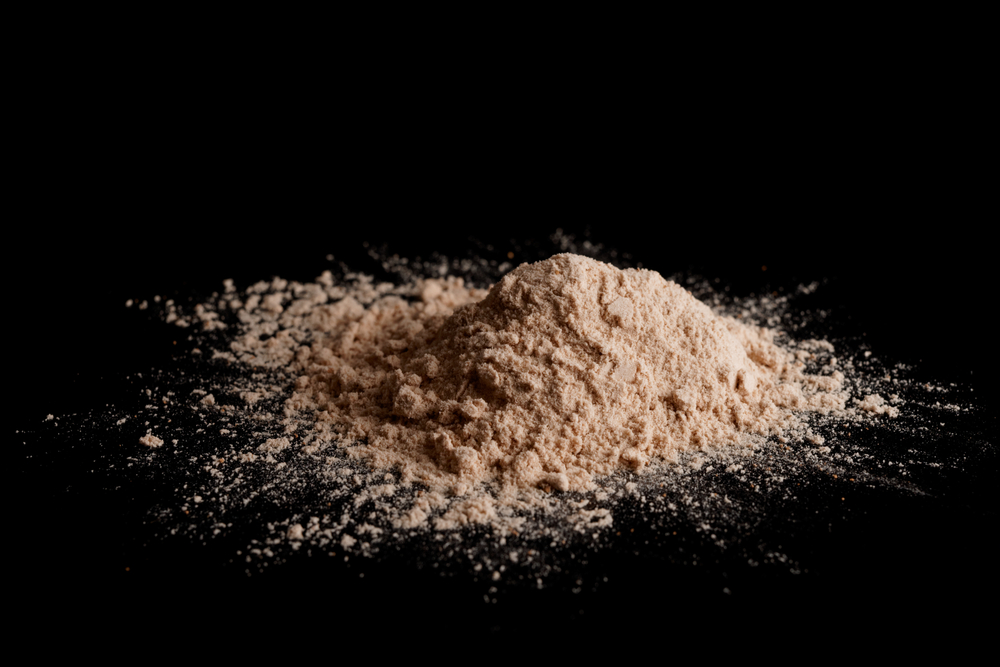
Brown Heroin:
Brown heroin is a dark powder and a more common form of the drug. Though not as crude and impure as black tar heroin, brown heroin is also not as pure or potent as the white powder. Since brown heroin is very difficult to dissolve, it is usually smoked.
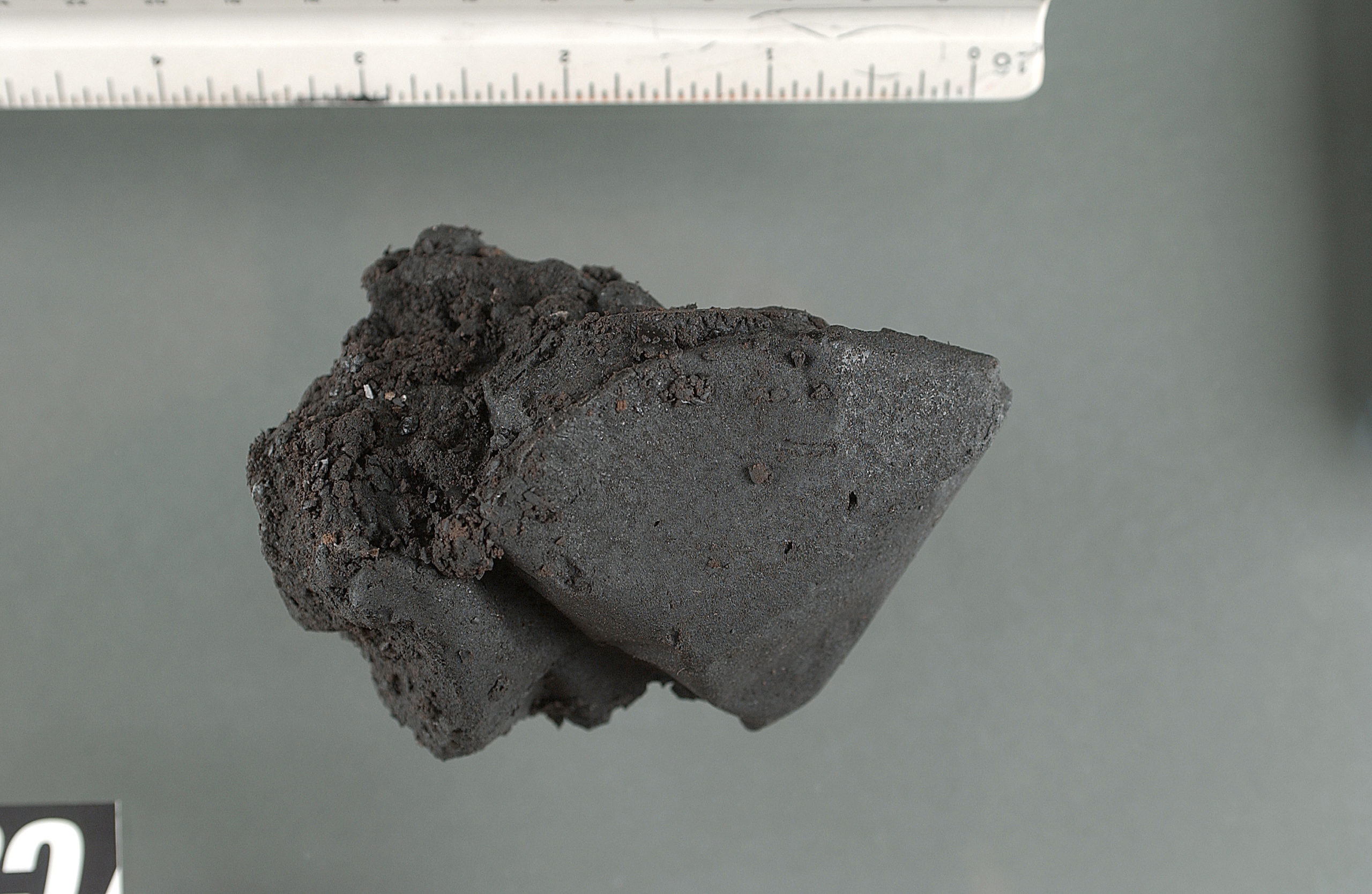
Black Heroin:
Black heroin is not a powder but a tar. It may appear lighter or darker depending on how it was cut or processed. It is generally dark and sticky goo that must be melted instead of dissolved. Black Tar is the least pure and most crude form of the drug, often containing many other dangerous additives. It is most widely produced in Mexico and sent to other countries.
Paraphernalia:
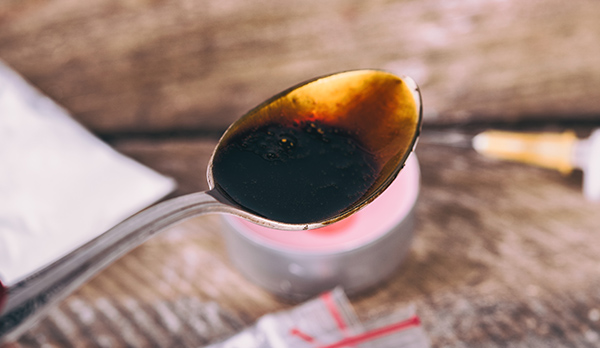
BURNT SPOONS
Spoons are often used to “cook” heroin for smoking. Bent, burnt, and missing spoons or q-tips without cotton are common signs of intravenous heroin use.
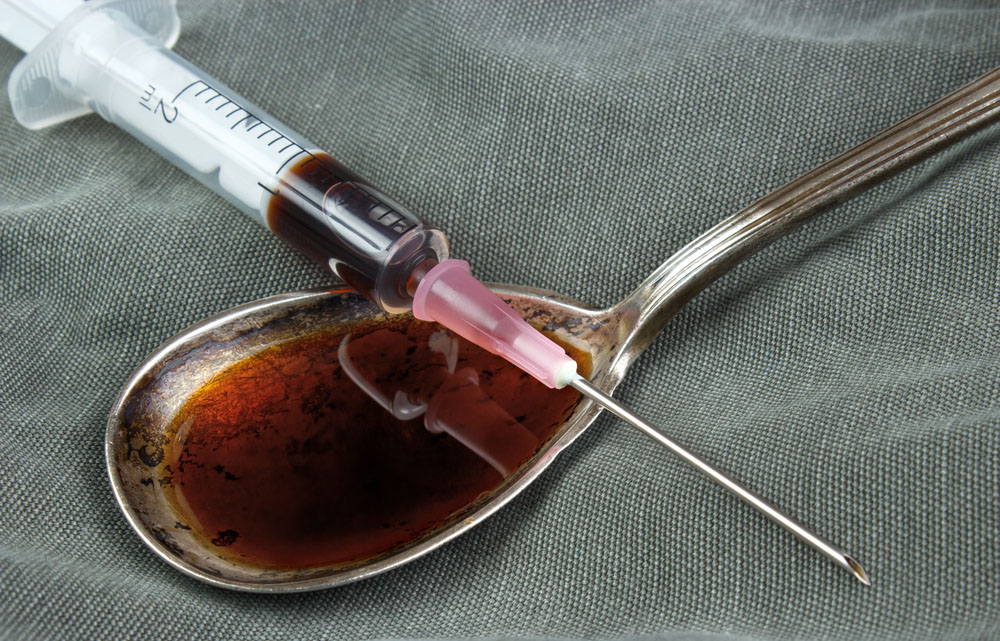
NEEDLES:
Needles are used to inject heroin after it’s been cooked. If you find a used needle, handle it carefully since people sometimes share needles.
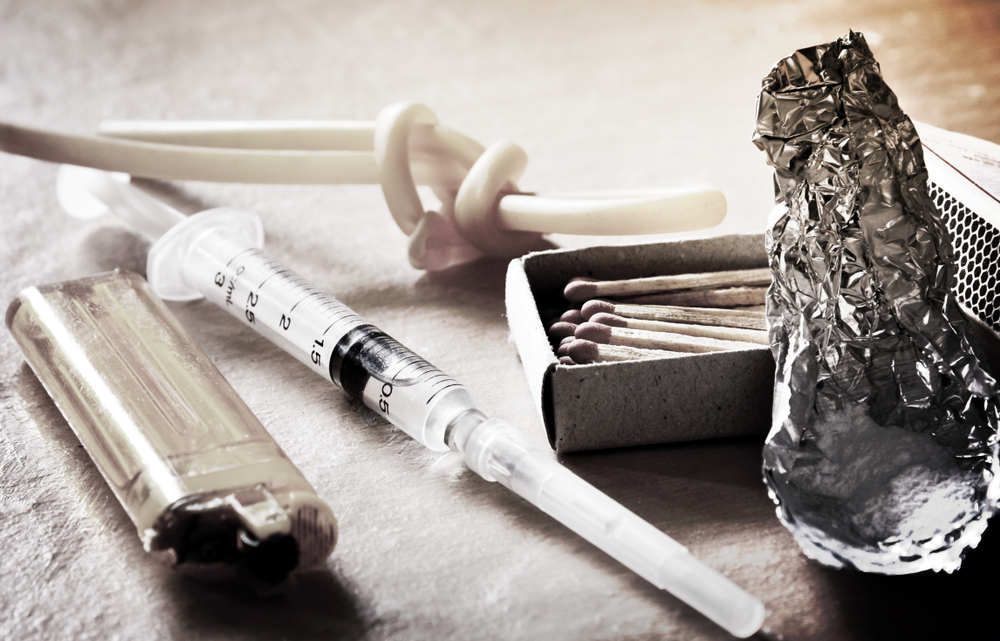
RUBBER HOSES:
Rubber hoses or shoelaces are used to make veins easier to find. These can be a sign of a more serious heroin habit.
Diagnosing Heroin Addiction:
Drug Misuse Definition:
The definition of drug misuse is using any drug in a way not prescribed by a doctor or allowed by law. Heroin is classified as an illegal schedule 1 narcotic (meaning it’s highly addictive and has no medical use) and is illegal to make or prescribe. So when it comes to heroin, the definition of drug misuse is any use of heroin at all.
Signs of Heroin Abuse:
Indications that somebody is abusing heroin can differ depending on how much, how often, and what dose a person uses. Signs include:
- Sleeping a lot: Heroin causes someone to “nod off” or go to sleep, so if someone keeps odd hours or suddenly goes from high to no energy, this can be an indication.
- Poor hygiene: Heroin is incredibly addictive and depresses energy levels. The result of these two factors is often less attention to superficial things like personal appearance.
- Baggy clothes: Heroin often causes itching, and as a person scratches, rashes will develop and break open into unsavory sores. Injecting heroin can also leave track marks, pus-filled sacs (called abscesses), and bruises. To hide these things, someone may wear unseasonably warm or uncharacteristically baggy clothes.
- Heroin Tracks: Heroin Tracks refer to the marks left by a needle after injecting heroin. When a person first begins injecting heroin, they have healthy, robust veins. However, over time needles will damage and collapse their veins from repeated injections. As a result, finding a suitable vein will become more difficult, and repeated stabs will leave “tracks” behind.
Take Our Heroin Quiz
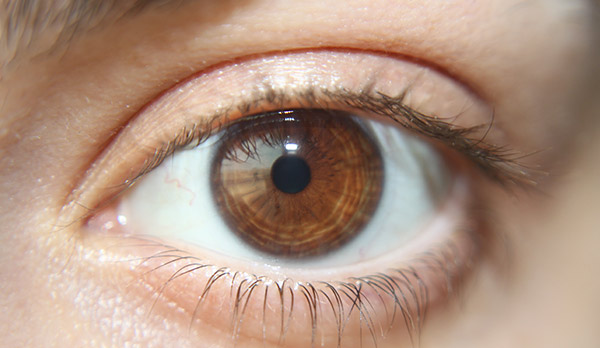
PINNED PUPILS
Opioids, including heroin, cause the pupils to constrict, making them appear “pinned.” Also look for tired look, red, and puffy eyes.
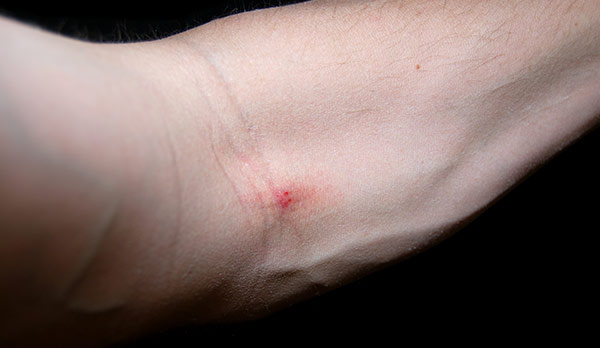
Heroin TRACKs
When heroin is injected, it created cuts on the arms, hands, feet, or neck known as “track marks.” Heroin users will often mask these marks by wearing long sleeves.
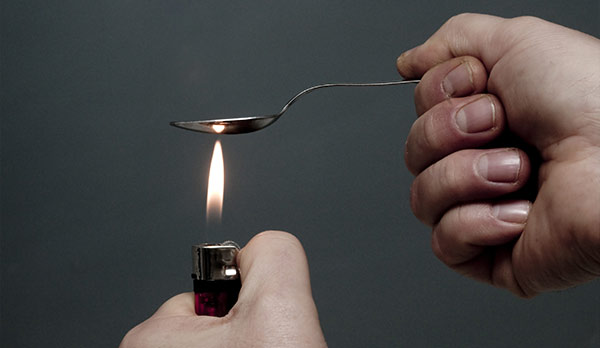
Missing & Burnt Spoons
Heroin is often prepared for injection using a spoon. Missing and burnt spoons, q-tips with the cotton pulled off, and orange syringe caps are all signs of IV heroin use.
Severe Signs of Heroin Abuse:
Tolerance: When you consistently use any substance, your body learns to tolerate it better, and as a result, the effect of that drug is reduced. With narcotics like heroin, this means that you’ll need to use more and more to get the same result. Tolerance is usually the first sign of addiction.
Heroin Dependence: Dependence occurs when your brain and body begin relying on heroin to function normally. If you are dependent on heroin and stop using it, you will experience withdrawal symptoms like vomiting, nausea, diarrhea, insomnia, anxiety, shaking, and pain. Dependance takes weeks to develop and is a serious sign of heroin addiction.
Heroin Withdrawals: Heroin withdrawals occur when you’ve developed physical dependence to heroin and stop using it. Usually, your brain lives in a chemical balance called homeostasis. When you become dependent on heroin, your brain enters allostasis. Meaning, your brain now depends on heroin to function fully. Disrupting allostasis by quitting heroin causes:
- Vomiting
- Diarrhea
- Pain
- Anxiety
- Restlessness
- Irritability
- Shaking
- Insomnia
Heroin Overdose:
The most serious sign of heroin addiction is overdosing. Overdoses are most common when somebody uses heroin again after a long break or when someone’s tolerance becomes so large that the dose needed to get high also causes an overdose.
Signs of Heroin Overdose:
- Awake but can’t talk
- Blue skin, blue lips, blue fingernails, or grey-ashen colored for darker-skinned people
- Body is limp
- Shallow breathing, erratic breathing, no breathing
- Choking or snore-like sounds (called “death rattles”)
- Pale or clammy face
- Loss of consciousness
Heroin overdoses are the second largest cause of drug-related deaths in America. If you think somebody has overdosed on heroin, call 911 immediately. There is no home remedy. If you are also intoxicated, you cannot be prosecuted if you call 911 to save someone else’s life.
Treating Heroin Addiction:
Treating heroin addiction often begins with a medically assisted detox where doctors can prescribe medicines to keep you comfortable during heroin withdrawals. What follows is treatment in a Partial Hospitalization or Intensive Outpatient setting where you learn your triggers and cope without resorting to heroin.
Detox: The process of ending heroin dependence. Detox requires getting through uncomfortable withdrawal symptoms and is always recommended for getting off heroin.
Residential Treatment (Inpatient): Medical supervision after detox. People live in a hospital and receive 24-hour care. Very effective for people who have underlying mental health issues that require medication.
Partial Hospitalization Program (PHP): Teaching you how to find and fight triggers. PHP uses several evidence-based therapies to help you identify things that trigger cravings, cope with those things, and practice effective relapse prevention strategies after rehab.
Intensive Outpatient Program (IOP): Individualizing your treatment. IOP builds on PHP by learning and practicing skills to find out what works best for you before you leave treatment.
Outpatient (Aftercare): Keeps tabs on sobriety. Aftercare consists of evening therapy sessions for people done with rehab. It’s designed to check their progress and address any struggles that might lead to relapse.
Help Someone Quit Heroin:
Tree House Recovery treats all substance abuse disorders, but our highest success rate is in treating heroin addiction. If someone you love needs help quitting heroin, call 503-850-2474. Or:
- Look at what former patients and other parents have said on Rehabs.com, Yelp, or Google.
- Our five-year success rates are available.
- See the results for yourself. We have video interviews with former patients and their parents, before and after clips of patients, and success stories.

